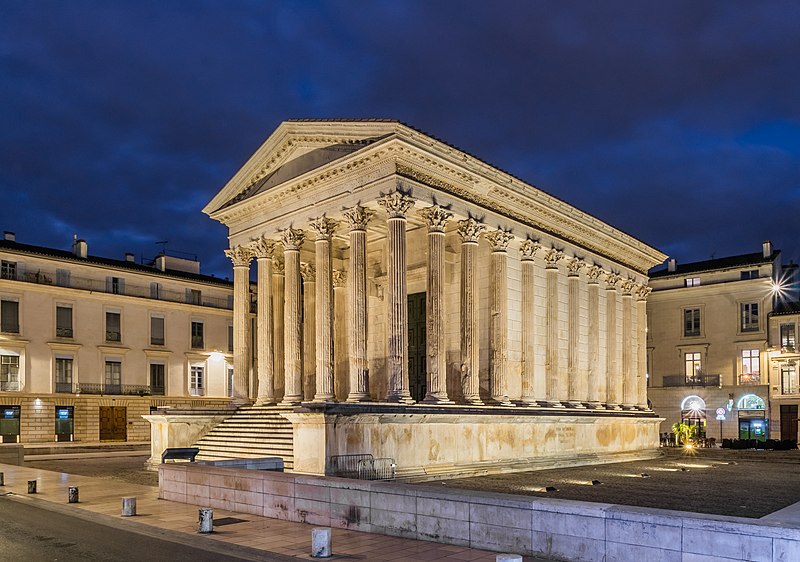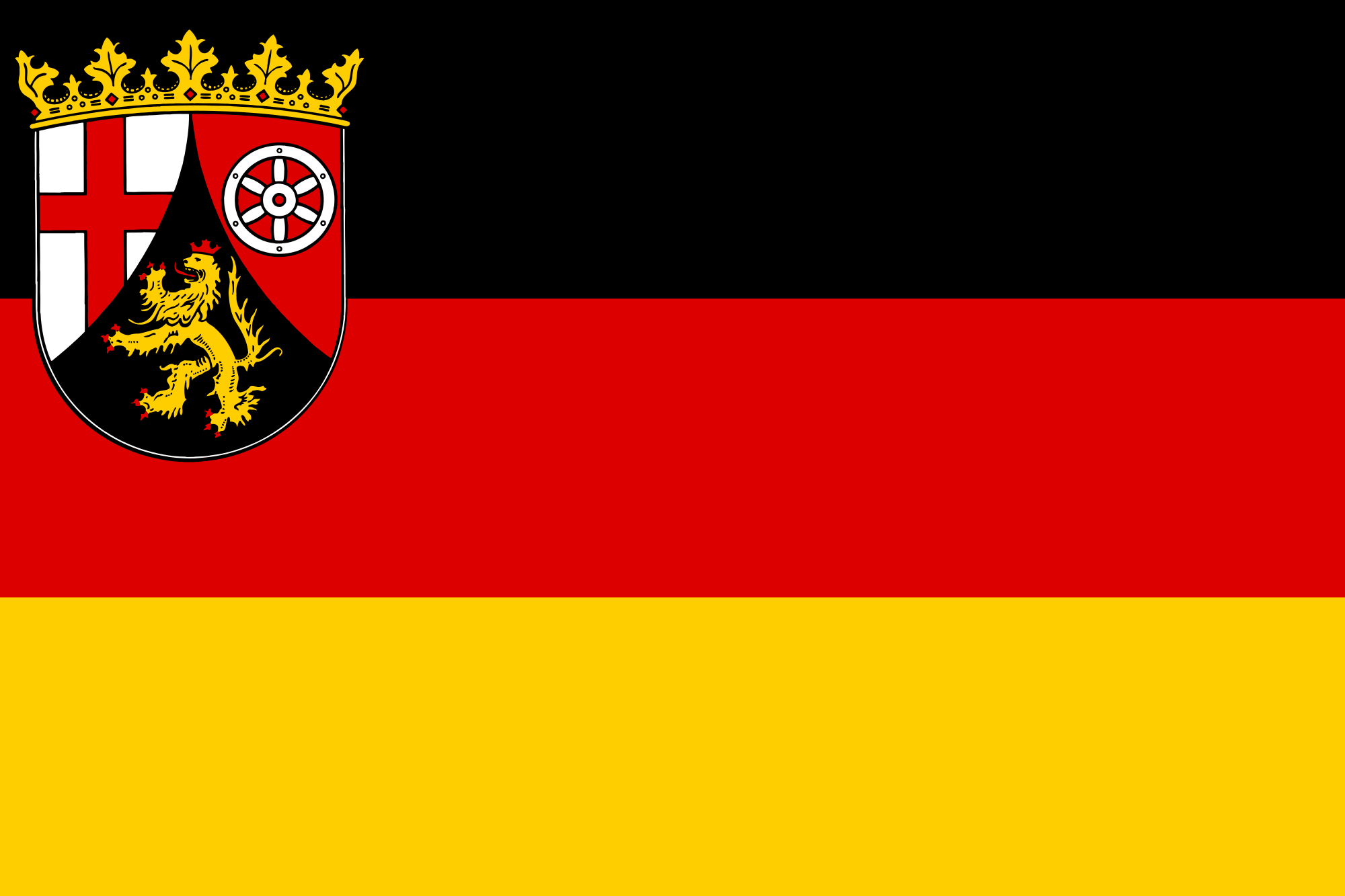
Deutsch-Chinesische Enzyklopädie, 德汉百科

金刚峯寺(こんごうぶじ)是一座位在日本和歌山县伊都郡高野町高野山的高野山真言宗总本山寺院。山号“高野山”(こうやさん),与京都的东寺同为真言宗密教之圣地。开基(创立者)为弘法大师空海。以“纪伊山地的圣地及朝圣路”的一部分登录世界遗产。
Kongōbu-ji (金剛峯寺) ist der kirchliche Haupttempel des Kōyasan-Shingon-Buddhismus auf dem Berg Kōya (高野山, Kōya-san) in der Präfektur Wakayama, Japan. Sein Name bedeutet Tempel des Diamantberggipfels. Er ist Teil des UNESCO-Weltkulturerbes „Heilige Stätten und Pilgerrouten im Kii-Gebirge“.
Der Tempel wurde 1593 von Toyotomi Hideyoshi nach dem Tod seiner Mutter als Seigan-ji-Tempel erbaut, 1861 wiederaufgebaut und erhielt 1869 seinen heutigen Namen. Er beherbergt zahlreiche Schiebetüren, die von Kanō Tanyū (1602-1674) und Mitgliedern der Kyotoer Kanō-Schule gemalt wurden.
Der moderne Banryūtei (蟠龍庭-Felsengarten) des Tempels ist der größte Japans (2340 Quadratmeter) und besteht aus 140 Granitsteinen, die so angeordnet sind, dass sie ein Drachenpaar darstellen, das aus den Wolken aufsteigt, um den Tempel zu schützen.
Der 414. Abt des Kongōbu-ji ist Hochwürden Kogi Kasai, der auch als Erzbischof der Kōyasan-Shingon-Schule fungiert.
Im Tempel können Besucher den Predigten der Mönche zuhören und an Ajikan-Meditationssitzungen teilnehmen. Der Begriff ajikan bezieht sich auf eine grundlegende Atem- und Meditationsmethode des Shingon-Buddhismus: „Meditieren auf den Buchstaben A“, der im Siddhaṃ-Alphabet geschrieben wird.

弗拉维乌斯·瓦莱里乌斯·奥勒里乌斯·君士坦丁(拉丁语:Flavius Valerius Aurelius Constantinus,272年2月27日—337年5月22日),常被称为君士坦丁一世(拉丁语:Constantinus I)、君士坦丁大帝(拉丁语:Constantinus Magnus,古希腊语:Κωνσταντῖνος ὁ Μέγας,英语:Constantine the Great),基督宗教尊称为伊利里亚的圣君士坦丁(英语:Saint Constantine),罗马帝国皇帝,306年至337年在位。他是第一位信仰基督宗教的罗马皇帝,在313年与李锡尼共同颁布《米兰诏书》,承认在帝国辖境有信仰基督教的自由[1]。
君士坦丁在内战中,击败马克森提乌斯和李锡尼,巩固皇位。统治期间,他对法兰克人、阿拉曼人、西哥特人和萨尔马提亚人的战役均取得胜利,并成功夺回在前一个世纪丧失的达基亚地区。他在拜占庭建立新皇宫[1],并将之命名为新罗马,但人们为尊君士坦丁之名,将此地称作君士坦丁堡。君士坦丁堡在此后一千年均为东罗马帝国的首都,因此君士坦丁也被认为是东罗马帝国的创立者。
君士坦丁一世死后,他的三个儿子君士坦丁二世、君士坦提乌斯二世、君士坦斯一世分别继承帝国的东、西、中三个部分,帝国一分为三。
Flavius Valerius Constantinus (* an einem 27. Februar zwischen 270 und 288 in Naissus, Moesia Superior; † 22. Mai 337 in Anchyrona, einer Vorstadt von Nikomedia), bekannt als Konstantin der Große (altgriechisch Κωνσταντῖνος ὁ Μέγας) oder Konstantin I., war von 306 bis 337 römischer Kaiser. Ab 324 regierte er bis zu seinem Tod als alleiniger Augustus.
Konstantins Aufstieg zur Macht vollzog sich im Rahmen der Auflösung der römischen Tetrarchie („Viererherrschaft“), die Kaiser Diokletian errichtet hatte. 306 trat Konstantin das Erbe seines Vaters Constantius I. an, nachdem dessen Soldaten ihn zum Kaiser ausgerufen hatten. Bis 312 hatte sich Konstantin im Westen, 324 auch im Gesamtreich durchgesetzt. Folgenreich war seine Regierungszeit vor allem aufgrund der von ihm eingeleiteten konstantinischen Wende, mit der der Aufstieg des Christentums zur wichtigsten Religion im Imperium Romanum begann. Seit 313 garantierte die Mailänder Vereinbarung im ganzen Reich die Religionsfreiheit, womit sie auch das noch einige Jahre zuvor verfolgte Christentum erlaubte. In der Folgezeit privilegierte Konstantin das Christentum. 325 berief er das Erste Konzil von Nicäa ein, um innerchristliche Streitigkeiten (arianischer Streit) beizulegen. Im Inneren trieb Konstantin mehrere Reformen voran, die das Reich während der weiteren Spätantike prägten. Außenpolitisch gelang ihm eine Sicherung und Stabilisierung der Grenzen.
Nach 324 verlegte Konstantin seine Residenz in den Osten des Reiches, in die nach ihm benannte Stadt Konstantinopel („Konstantinsstadt“). Viele Einzelheiten seiner Politik sind bis heute umstritten, besonders Fragen, die sein Verhältnis zum Christentum betreffen.


 Architecture
Architecture
 Byzantine architecture
Byzantine architecture

 Architecture
Architecture
 Roman architecture
Roman architecture

 History
History
 K 500 - 1000 AD
K 500 - 1000 AD

 History
History
 J 0 - 500 AD
J 0 - 500 AD

 History
History
 L 1000 - 1500 AD
L 1000 - 1500 AD

君士坦丁堡(希腊语:Κωνσταντινούπολις、Κωνσταντινούπολη;拉丁语:Constantinopolis;奥斯曼土耳其文:قسطنطینیه;现代土耳其语:İstanbul)是土耳其最大城市伊斯坦布尔的旧名,现在则指伊斯坦布尔金角湾与马尔马拉海之间的地区。它曾经是罗马帝国、拜占庭帝国、拉丁帝国和奥斯曼帝国的首都。
公元330年,罗马帝国皇帝君士坦丁一世在拜占庭建立新都,命名为新罗马(拉丁语:Nova Roma;希腊语:Νέα Ρώμη),但该城普遍被以建立者之名称作君士坦丁堡。在公元12世纪时[1],君士坦丁堡是全欧洲规模最大且最为繁华的城市[2]。
后来拜占庭帝国逐渐衰落,领土范围也缩减到君士坦丁堡及其周边地区。公元1453年,君士坦丁堡被奥斯曼帝国攻陷,此后成为奥斯曼帝国的新首都,再次繁荣起来。西方学者们习惯上将基督教治下(330年至1453年)的该城称作君士坦丁堡,而将此后伊斯兰教治下的城市称作伊斯坦布尔。如今,君士坦丁堡之名仍然被东正教沿用,教众们将君士坦丁堡教会的领袖,亦是整个东正教会名义上地位最高的领袖称作君士坦丁堡普世牧首。
君士坦丁堡亦以其宏伟的建筑而闻名。著名的建筑包括圣索菲亚大教堂、君士坦丁堡大皇宫、君士坦丁堡竞技场和黄金城门,大道与广场在其间星罗棋布。在1204年和1453年两次被劫掠之前,君士坦丁堡还保存着为数众多的艺术和文学作品[3]。在被奥斯曼帝国攻克之时,该城已经逐渐破败,但在此后得到了迅速的复兴与发展,并于17世纪中叶再次成为当时世界第一大城市[1]。
Die Stadt Konstantinopel wurde von dorischen Siedlern aus dem griechischen Mutterland um 660 v. Chr. unter dem Namen Byzantion gegründet. Am 11. Mai 330 n. Chr. machte sie der römische Kaiser Konstantin der Große zu seiner Hauptresidenz, baute sie großzügig aus und benannte sie offiziell in Nova Roma (Νέα Ῥώμη Nea Rhōmē, „Neues Rom“) um. In der Spätantike beanspruchte die Stadt auch den Rang als „Zweites Rom“. Nach dem Tod Kaiser Konstantins 337 wurde die Stadt offiziell in Constantinopolis umbenannt. Sie war die Hauptstadt des Oströmischen Reichs und blieb dies – abgesehen von der Eroberung im Vierten Kreuzzug – ununterbrochen bis zur Eroberung durch die Osmanen 1453. Unter den Namen Kostantiniyye / قسطنطينيه und استانبول / Istānbūl war es dann bis 1923 die Hauptstadt des Osmanischen Reichs.[1]
Spätestens ab 1930 setzte sich der Name Istanbul, der bereits im Seldschukischen und Osmanischen Reich gebräuchlich war,[2] auch international durch. Als Prototyp einer imperialen Stadt ist es seit dem 4. Jahrhundert eine Weltstadt.
コンスタンティノープル(英: Constantinople、ラテン語: Constantinopolis、古代ギリシア語: Κωνσταντινούπολις)は、東ローマ帝国の首都であった都市で、現在のトルコの都市イスタンブールの前身である。
強固な城壁の守りで知られ、330年の建設以来、1453年の陥落まで難攻不落を誇り、東西交易路の要衝として繁栄した。正教会の中心地ともなり、現在もコンスタンティノープル総主教庁が置かれている。
コンスタンティノープルは、330年にローマ皇帝コンスタンティヌス1世が、古代ギリシアの植民都市ビュザンティオン (古希: Βυζάντιον) の地に建設した都市である。この地は古来よりアジアとヨーロッパを結ぶ東西交易ルートの要衝であり、また天然の良港である金角湾を擁していた。都市名は「コンスタンティヌスの町」を意味する。
330年より東ローマ帝国の行政首都として建設された[1]。西ローマ帝国において西方正帝が消失した後には同地で「新ローマ」「第2のローマ」とする意識が育ち、遅くとも6世紀中頃までには定着した。東ローマ帝国の隆盛と共に、30万~40万の人口を誇るキリスト教圏最大の都市として繁栄し、「都市の女王」「世界の富の3分の2が集まる所」とも呼ばれた。また古代の建造物が残る大都市としてその偉容を誇った。正教会の首長であるコンスタンティノープル総主教庁が置かれ、正教会の中心ともなり、ビザンティン文化の中心でもあった。都市の守護聖人は聖母マリアである。
コンスタンティノープルは強固な城壁の守りでも知られ、東ローマ帝国の長い歴史を通じて外敵からの攻撃をたびたび跳ね返した。しかし1204年に第4回十字軍の攻撃を受けると衰退が加速した。1453年にオスマン帝国によりコンスタンティノープルが陥落し、東ローマ帝国が滅亡すると、この街はオスマン帝国の首都となった。日本ではこれ以後をトルコ語によるイスタンブールの名で呼ぶことが多い。ただし、公式にイスタンブールと改称されるのはトルコ革命後の1930年である。
Constantinople (Greek: Κωνσταντινούπολις, translit. Kōnstantinoúpolis; Latin: Cōnstantīnopolis) was the capital city of the Roman Empire (330–395), of the Byzantine Empire (395–1204 and 1261–1453), and also of the brief Crusader state known as the Latin Empire (1204–1261), until finally falling to the Ottoman Empire (1453–1923). It was reinaugurated in 324 from ancient Byzantium as the new capital of the Roman Empire by Emperor Constantine the Great, after whom it was named, and dedicated on 11 May 330.[5] The city was located in what is now the European side and the core of modern Istanbul.
From the mid-5th century to the early 13th century, Constantinople was the largest and wealthiest city in Europe.[6] The city was also famed for its architectural masterpieces, such as the Greek Orthodox cathedral of Hagia Sophia, which served as the seat of the Ecumenical Patriarchate, the sacred Imperial Palace where the Emperors lived, the Galata Tower, the Hippodrome, the Golden Gate of the Land Walls, and the opulent aristocratic palaces lining the arcaded avenues and squares. The University of Constantinople was founded in the fifth century and contained numerous artistic and literary treasures before it was sacked in 1204 and 1453,[7] including its vast Imperial Library which contained the remnants of the Library of Alexandria and had over 100,000 volumes of ancient texts.[8] It was instrumental in the advancement of Christianity during Roman and Byzantine times as the home of the Ecumenical Patriarch of Constantinople and as the guardian of Christendom's holiest relics such as the Crown of Thorns and the True Cross.
Constantinople was famed for its massive and complex defences. The first wall of the city was erected by Constantine I, and surrounded the city on both land and sea fronts. Later, in the 5th century, the Praetorian Prefect Anthemius under the child emperor Theodosius II undertook the construction of the Theodosian Walls, which consisted of a double wall lying about 2 kilometres (1.2 mi) to the west of the first wall and a moat with palisades in front.[9] This formidable complex of defences was one of the most sophisticated of Antiquity. The city was built intentionally to rival Rome, and it was claimed that several elevations within its walls matched the 'seven hills' of Rome. Because it was located between the Golden Horn and the Sea of Marmara the land area that needed defensive walls was reduced, and this helped it to present an impregnable fortress enclosing magnificent palaces, domes, and towers, the result of the prosperity it achieved from being the gateway between two continents (Europe and Asia) and two seas (the Mediterranean and the Black Sea). Although besieged on numerous occasions by various armies, the defences of Constantinople proved impregnable for nearly nine hundred years.
In 1204, however, the armies of the Fourth Crusade took and devastated the city, and its inhabitants lived several decades under Latin misrule. In 1261 the Byzantine Emperor Michael VIII Palaiologos liberated the city, and after the restoration under the Palaiologos dynasty, enjoyed a partial recovery. With the advent of the Ottoman Empire in 1299, the Byzantine Empire began to lose territories and the city began to lose population. By the early 15th century, the Byzantine Empire was reduced to just Constantinople and its environs, along with Morea in Greece, making it an enclave inside the Ottoman Empire; after a 53-day siege the city eventually fell to the Ottomans, led by Sultan Mehmed II, on 29 May 1453,[10] whereafter it replaced Edirne (Adrianople) as the new capital of the Ottoman Empire.[11]
Constantinople (en latin Constantinopolis, en grec ancien Κωνσταντινούπολις (Kônstantinoúpolis), en grec moderne Κωνσταντινούπολη (Konstantinoúpoli), en turc ottoman قسطنطینیه (Kostantiniyye), en arménien Կոստանդնուպոլիս (Kostandnoupolis) est l'appellation ancienne et historique de l'actuelle ville d'Istanbul en Turquie (du 11 mai 330 au 28 mars 1930). Son nom originel, « Byzance » (en grec ancien Βυζάντιον (Byzántion), venant soit du mot grec buzō signifiant « resserré » en référence au Bosphore, soit du mot thrace βυζή buzē : « rivage »), n'était plus en usage à l'époque de l'Empire, mais a été repris depuis le XVIe siècle par les historiens modernes.
Les habitants de Byzance sont les « Byzantins » et ceux de Constantinople les « Constantinopolitains »N 1. Depuis le XVIe siècle, les historiens modernes ont élargi la signification de « Byzantins » à tous les citoyens de l'Empire romain d'Orient, lui-même qualifié de « byzantin ». « Constantinople » est la francisation de Konstantinoupolis, qui, en grec, signifie « ville de Constantin ». Ce nom lui a été donné par l'empereur romain Constantin Ier lui-même, qui choisit d'en faire la capitale de l'empire à partir du 11 mai 330 et qui la proclama la « Deuxième Rome »1,N 2.
Costantinopoli (in latino: Constantinopolis; in greco: Κωνσταντινούπολις, Konstantinoupolis), o Nuova Roma (in latino Nova Roma, in greco Νέα Ῥώμη, Nea Rōmē), o la Città d'Oro, sono alcuni dei nomi e degli epiteti dell'odierna città di Istanbul, sulle rive del Bosforo, maggior centro urbano della Turchia. Il nome Costantinopoli fu in particolare tenuto dalla città nel periodo intercorrente tra la rifondazione ad opera dell'imperatore romano Costantino I e la conquista da parte del sultano ottomano Maometto II.
Durante tale periodo la città fu una delle capitali dell'Impero romano (anni 330-395) e capitale dell'Impero romano d'Oriente (anni 395-1204 e 1261-1453) e dell'Impero latino (anni 1204-1261). Il nome rimase comunque in uso anche durante l'Impero ottomano, quando era nota ufficialmente come Kostantîniyye (قسطنطينيه) in lingua turca ottomana e come Costantinopoli presso gli occidentali, sino al 1930, quando il nome Istanbul in lingua turca venne ufficializzato e reso esclusivo dalle autorità turche.
È inoltre la città che subì più assedi nella storia umana, capitolando solamente due volte: la prima durante il saccheggio dei crociati nel 1204 e la seconda quando fu definitivamente conquistata dagli ottomani nel 1453.
Constantinopla (en griego antiguo: Κωνσταντινούπολις, Kōnstantinoúpolis, abreviado como en griego medieval ἡ Πόλις, ί Pόlis, 'La Ciudad'; en latín Cōnstantinōpolis, en turco otomano formal Konstantiniyye) es el nombre histórico de la actual ciudad de Estambul (en idioma turco İstanbul), situada a ambos lados del Estrecho del Bósforo en Turquía, y que fue capital de distintos imperios a lo largo de la historia: del Imperio romano (330-395), del Imperio romano de Oriente o Imperio bizantino (395-1204 y 1261-1453), del Imperio latino (1204-1261) y del Imperio otomano (1453-1922), que empezó con la Caída de Constantinopla y terminó con la Ocupación de Constantinopla.
Estratégicamente situada entre el Cuerno de Oro y el mar de Mármara en el punto de encuentro de Europa y Asia, la Constantinopla bizantina fue baluarte de la Cristiandad y heredera del mundo griego y romano.[cita requerida] A lo largo de la Edad Media fue la mayor y más rica ciudad de Europa[cita requerida], y conocida como «la Reina de las Ciudades» (Basileuousa Polis). Por otra parte, fue llamada la Encrucijada del Mundo, pues era el nexo de comercio entre Asia, Europa y África (marítimo).
Dependiendo de sus gobernantes y el momento histórico, ha tenido diferentes nombres; entre los más comunes están Bizancio (en griego Byzantion), Stamboul o Nueva Roma (en griego Νέα Ῥώμη, en latín Nova Roma), este último un nombre más eclesiástico que oficial. Fue conocida por la Guardia Varega con el nombre de Miklagarðr (Gran Ciudad). Fue rebautizada oficialmente Estambul (su nombre actual) en 1930 mediante la Ley Turca de Servicio Postal, una de las reformas nacionales impulsadas por Atatürk.


Kumārajīva (chinesisch 鳩摩羅什 / 鸠摩罗什, Pinyin Jiūmóluóshí, W.-G. Chiu1-mo2-lo2-shih2, jap. Kumarajū; * 343; † 413) war ein im zentralasiatischen Königreich Kucha geborener Mönch und Gelehrter. Mit zu seinen wichtigsten Arbeiten gilt die Übersetzung des Lotos-Sutra aus dem Sanskrit ins Chinesische. Diese Übersetzung gilt allgemein als die authentischste und genaueste und bildete die theoretische Grundlage vieler chinesischer und japanischer Schulen des Mahayana-Buddhismus.
鸠摩罗什(梵语:कुमारजीव,IAST:Kumārajīva,344年—413年5月28日)[1],意译童寿[2],又音译鸠摩罗什婆(上古汉语拟音:Ku-māl-rāl-ɡjub-bāl)、鸠摩罗耆婆、鸠摩逻多、拘摩罗逻多、究摩罗罗陀等,略称罗什[3]。佛教僧人,活跃于东晋十六国时期,是汉传佛教著名译师,译著如《金刚经》、《法华经》、《中论》、《大智度论》等等。与真谛、玄奘称为中国佛教三大翻译家。

 Education and Research
Education and Research

 Botany
Botany

 Geography
Geography
 *World overview
*World overview

 History
History
 K 500 - 1000 AD
K 500 - 1000 AD

 History
History
 J 0 - 500 AD
J 0 - 500 AD

 History
History
 L 1000 - 1500 AD
L 1000 - 1500 AD

 History
History
 M 1500 - 2000 AD
M 1500 - 2000 AD

 History
History
 M 1500 - 2000 AD
M 1500 - 2000 AD

 Law
Law

 Hand in Hand
Hand in Hand

 Hand in Hand
Hand in Hand
 Institute of Culture and Language
Institute of Culture and Language

 Art
Art

 Literature
Literature

 Medical, Pharmaceutical, Rehabilitation
Medical, Pharmaceutical, Rehabilitation

 Review
Review

 Science and technology
Science and technology

拉丁语(拉丁语:Lingua Latīna),属于印欧语系意大利语族。是最早在拉提姆地区(今意大利的拉齐奥区)和罗马帝国使用。虽然现在拉丁语通常被认为是一种死语言,但仍有少数基督宗教神职人员及学者可以流利使用拉丁语。罗马天主教传统上用拉丁语作为正式会议的语言和礼拜仪式用的语言。此外,许多西方国家的大学仍然提供有关拉丁语的课程。
在英语和其他西方语言创造新词的过程中,拉丁语一直得以使用。拉丁语及其后代罗曼斯诸语是意大利语族(Italic Languages)中仅存的一支。通过对早期意大利遗留文献的研究,可以证实其他意大利语族分支的存在,之后这些分支在罗马共和国时期逐步被拉丁语同化。拉丁语的亲属语言包括法利斯克语、奥斯坎语和翁布里亚语。但是,威尼托语可能是一个例外。在罗马时代,作为威尼斯居民的语言,威尼托语得以和拉丁语并列使用。
拉丁语是一种高度屈折的语言。它有三种不同的性,名词有七格,动词有四种词性变化、六种时态、六种人称、三种语气、三种语态、两种体、两个数。七格当中有一格是方位格,通常只和方位名词一起使用。呼格与主格基本一致,因此拉丁语一般只有五个不同的格。不同的作者在行文中可能使用五到七种格。形容词与副词类似,按照格、性、数曲折变化。虽然拉丁语中有指示代词指代远近,它却没有冠词。后来拉丁语通过不同的方式简化词尾的曲折变化,形成了罗曼语族。
拉丁语在一定程度上缺乏希腊语的多样性和灵活性,这可能反映了罗马人讲求实际的民族性格。比起文学创作的多样和灵活,罗马人更关心政府和帝国的发展与扩张,对推测和诗意的想象不感兴趣。但是,即便在这种情况下,在众多古典时期大师们的笔下,拉丁语依然是堪与世界上其他任何内涵丰富语言媲美的文学、诗歌的语言。
拉丁语与希腊语同为影响欧美学术与宗教最深的语言。在中世纪,拉丁语是当时欧洲不同国家交流的媒介语,也是研究科学、哲学和神学所必须的语言。直到近代,通晓拉丁语曾是研究任何人文学科教育的前提条件;直到20世纪,拉丁语的研究才逐渐衰落下去,重点转移到对当今语言的研究。
Die lateinische Sprache (lateinisch lingua Latina), kurz Latein, ist eine indogermanische Sprache, die ursprünglich von den Latinern, den Bewohnern von Latium mit Rom als Zentrum, gesprochen wurde. Die frühesten Zeugnisse reichen bis ins 5. oder 6. vorchristliche Jahrhundert zurück (Frühlatein), ab dem 3. vorchristlichen Jahrhundert liegen längere Texte vor (Altlatein), ihre volle Ausformung in der Gestalt des heute vor allem bekannten und gelehrten klassischen Lateins erreichte die (Schrift-)Sprache im ersten vorchristlichen Jahrhundert.
Latein war Amtssprache des Römischen Reichs und wurde so zur dominierenden Verkehrssprache im westlichen Mittelmeerraum. Während sich aus der gesprochenen Umgangssprache, dem sogenannten Vulgärlatein, die romanischen Sprachen entwickelten, blieb das Latein der römischen Schriftsteller auch als tote Sprache bis in die Neuzeit die führende Sprache der Literatur, Wissenschaft, Politik und Kirche. Gelehrte wie Thomas von Aquin, Petrarca, Erasmus, Luther, Kopernikus, Descartes oder Newton haben Werke auf Latein verfasst. Bis ins 19. Jahrhundert wurden die Vorlesungen an den Universitäten in ganz Europa auf Latein gehalten. In Polen, Ungarn und im Heiligen Römischen Reich war Latein bis dahin Amtssprache. In Tausenden von Lehn- und Fremdwörtern sowie Redewendungen ist Latein heute auch in nichtromanischen Sprachen wie Deutsch oder Englisch präsent. Bei der Bildung neuer Fachbegriffe wird immer wieder auf Latein zurückgegriffen.
Wegen seiner enormen Bedeutung für die sprachliche und kulturelle Entwicklung Europas wird Latein vor allem in Deutschland,[1] Österreich und der Schweiz an vielen Schulen und Universitäten gelehrt. Für manche Studiengänge sind Lateinkenntnisse oder das Latinum erforderlich. Ähnlich stellt sich die Situation im Vereinigten Königreich dar, wo Latein bereits in der Primarstufe unterrichtet wird.
ラテン語(ラテンご、ラテン語: lingua latina リングア・ラティーナ)は、インド・ヨーロッパ語族のイタリック語派の言語の一つ。ラテン・ファリスク語群。漢字表記は拉丁語・羅甸語で、拉語・羅語と略される。 元々は古代ローマ共和国の公用語として広く普及した古代言語である。西ローマ帝国滅亡後もラテン語はローマ文化圏の古典文学を伝承する重要な役割を果たした。勢力を伸ばすキリスト教会を通してカトリック教会の公用語としてヨーロッパ各地へ広まり、祭祀宗教用語として使用されるようになると、中世には、中世ラテン語として成長した。ルネサンスを迎えると、自然科学・人文科学・哲学のための知識階級の言語となった。さらに、読書き主体の文献言語や学術用語として近世のヨーロッパまで発展・存続した。現在もラテン語はバチカンの公用語であるものの、日常ではほとんど使われなくなったといえる。しかし、各種学会・医学・自然科学・数学・哲学・工業技術など各専門知識分野では、世界共通の学名としてラテン語名を付けて公表する伝統があり、新発見をラテン語の学術論文として発表するなど、根強く用いられ続けている[2]。また、略号として午前午後のa.m.(ante meridiem)p.m.(post meridiem)や、ウイルス(virus)やデータ(data)など、日常的に用いられる語のなかにも語源がラテン語に由来するものがある。
Latin (Latin: lingua latīna, IPA: [ˈlɪŋɡʷa laˈtiːna]) is a classical language belonging to the Italic branch of the Indo-European languages. The Latin alphabet is derived from the Etruscan and Greek alphabets, and ultimately from the Phoenician alphabet.
Latin was originally spoken in the area around Rome, known as Latium.[4] Through the power of the Roman Republic, it became the dominant language, initially in Italy and subsequently throughout the western Roman Empire. Vulgar Latin developed into the Romance languages, such as Italian, Portuguese, Spanish, French, and Romanian. Latin, Greek, and French have contributed many words to the English language. In particular, Latin and Ancient Greek roots are used in English descriptions of theology, biology, science, medicine, and law.
By the late Roman Republic (75 BC), Old Latin had been standardised into Classical Latin. Vulgar Latin was the colloquial form spoken during the same time and attested in inscriptions and the works of comic playwrights like Plautus and Terence.[5] Late Latin is the written language from the 3rd century, and Medieval Latin the language used from the 9th century to the Renaissance which used Renaissance Latin. Later, Early Modern Latin and New Latin evolved. Latin was used as the language of international communication, scholarship, and science until well into the 18th century, when it began to be supplanted by vernaculars. Ecclesiastical Latin remains the official language of the Holy See and the Roman Rite of the Catholic Church.
Latin is taught in primary, secondary, and postsecondary educational institutions around the world.[6][7]
Latin is a highly inflected language, with three distinct genders, up to seven noun cases, five declensions, four verb conjugations, three tenses, three persons, three moods, two voices, two or three aspects and two numbers.
Le latin (en latin : lingua Latīna ou Latīna lingua) est une langue italique de la famille des langues indo-européennes, parlée à l'origine par les Latins dans le Latium de la Rome antique. Bien qu'il soit souvent considéré comme une langue mortenote 1, sa connaissance, voire son usage, se sont maintenus à l'université et dans le clergé. De nombreuses écoles et universités continuent à l'enseigner1,note 2. Le latin est toujours utilisé pour la production de néologismes dans de nombreuses familles de langues. Le latin ainsi que les langues romanes (dites parfois néo-latines), sont la seule branche des langues italiques à avoir survécu. Les autres branches sont attestées dans des documents datant de l'Italie préromaine, mais ont été assimilées durant la période républicaine ou au début de l'époque impériale.
Langue flexionnelle, elle comporte sept cas, deux nombres et trois genres. L'alphabet latin est dérivé des alphabets étrusque et grec. Enrichi de lettres supplémentaires et de signes diacritiques, il est utilisé aujourd'hui par de nombreuses langues vivantes et comportait à l'époque classique 23 lettres, dont 5 voyelles (a, e, i, o, u), 2 semi-voyelles et 17 consonnes.
Il latino è una lingua indoeuropea appartenente al gruppo delle lingue latino-falische.[1] Veniva parlata nel Lazio (Lătĭŭm in latino) almeno dagli inizi del I millennio a.C.
Il latino acquistò grande importanza con l'espansione dello stato romano e in quanto lingua ufficiale dell'impero si radicò in gran parte dell'Europa e dell'Africa settentrionale. Tutte le lingue romanze discendono dal latino volgare, ma parole di origine latina si trovano spesso anche in molte lingue moderne di altri ceppi: questo perché anche dopo la caduta dell'Impero romano d'Occidente, per più di un millennio il latino fu, nel mondo occidentale, la lingua della cultura.
Quando venne meno questa sua funzione, intorno al XVII ed al XVIII secolo, essa fu assunta dalle lingue vive europee del tempo e, in alcuni ambiti letterari (memorialistica in particolare) e nella diplomazia, dal francese. Quest'ultima, essendo una lingua romanza, continuò a promuovere parole di origine latina negli altri idiomi fino ai primi decenni del Novecento, allorquando si andò gradualmente imponendo in Europa e nel mondo, come lingua franca, l'inglese, che pur essendo di ceppo germanico presenta, soprattutto nel lessico, un gran numero di termini di origine latina, grazie alla diffusione dei termini dotti trasmessi dai monaci predicatori cristiani e più tardi alla conquista dell'Inghilterra da parte dei Normanni francesizzati.
Nel frattempo, in seguito alla conoscenza dell'America dopo il 1492 e alla politica coloniale degli stati europei, alcune lingue romanze (spagnolo, francese, portoghese e italiano) unitamente ad altri idiomi dell'Europa occidentale, in cui l'impronta latina era forte, fra cui l'inglese, si erano poi diffuse in gran parte del mondo.
La lingua latina si è sviluppata grazie anche al contributo di tutte le lingue dei popoli con cui è entrata in contatto durante l'epoca romana, ed in particolare con gli idiomi italici, l'idioma etrusco e con quelli parlati nel Mediterraneo orientale (soprattutto il greco).
Attualmente le lingue con maggiore somiglianza al latino sono il sardo per la pronuncia, l'italiano per il lessico, il romeno per la struttura grammaticale (sono presenti declinazioni).
Il latino ecclesiastico è lingua coufficiale nella Santa Sede; la Chiesa cattolica ha usato il latino come principale lingua liturgica fino al Concilio Vaticano II.
In Italia è insegnato nei licei classici, nei licei scientifici, nei licei delle scienze umane e nei licei linguistici, benché il suo studio sia stato ridimensionato considerevolmente dalla Riforma Gelmini dal 2011.
Il latino è usato per designare i nomi nelle classificazioni scientifiche degli esseri viventi. In Europa orientale i nomi delle medicine sono dati anche in latino, così come nel campo dell'omeopatia.
El latín es una lengua de la rama itálica3 de la familia lingüística del indoeuropeo4 que fue hablada en la Antigua Roma y, posteriormente durante la Edad Media y la Edad Moderna, y llegó a la Edad Contemporánea, pues se mantuvo como lengua científica hasta el siglo XIX. Su nombre deriva de una zona geográfica de la península itálica donde se desarrolló Roma, el Lacio (en latín, Latium).
Adquirió gran importancia con la expansión de Roma,5 y fue lengua oficial del imperio en gran parte de Europa y África septentrional, junto con el griego. Como las demás lenguas indoeuropeas en general, el latín era una lengua flexiva de tipo fusional con un mayor grado de síntesis nominal que las actuales lenguas romances, en la cual dominaba la flexión mediante sufijos, combinada en determinadas veces con el uso de las preposiciones, mientras que en las lenguas modernas derivadas dominan las construcciones analíticas con preposiciones, mientras que se ha reducido la flexión nominal a marcar solo el género y el número, conservando los casos de declinación solo en los pronombres personales (estos tienen, además, un orden fijo en los sintagmas verbales).b
El latín originó un gran número de lenguas europeas, denominadas lenguas romances, como el portugués, el gallego, el español, el asturleonés, el aragonés, el catalán, el occitano, el francés, el valón, el retorrománico, el italiano, el rumano y el dálmata. También ha influido en las palabras de las lenguas modernas debido a que durante muchos siglos, después de la caída del Imperio romano, continuó usándose en toda Europa como lingua franca para las ciencias y la política, sin ser seriamente amenazada en esa función por otras lenguas en auge (como el castellano en el siglo XVII o el francés en el siglo XVIII), hasta prácticamente el siglo XIX.
La Iglesia católica lo usa como lengua litúrgica oficial (sea en el rito romano sea en los otros ritos latinos), aunque desde el Concilio Vaticano II se permiten además las lenguas vernáculas.6 También se usa para los nombres binarios de la clasificación científica de los reinos animal y vegetal, para denominar figuras o instituciones del mundo del Derecho, como lengua de redacción del Corpus Inscriptionum Latinarum, y en artículos de revistas científicas publicadas total o parcialmente en esta lengua.
El estudio del latín, junto con el del griego clásico, es parte de los llamados estudios clásicos, y aproximadamente hasta los años 1960 fue estudio casi imprescindible en las humanidades. El alfabeto latino, derivado del alfabeto griego, es ampliamente el alfabeto más usado del mundo con diversas variantes de una lengua a otra.
Лати́нский язык (самоназвание — lingua latina), или латы́нь, — язык латино-фалискской ветви италийских языков индоевропейской языковой семьи. На сегодняшний день это единственный активный, хотя и ограниченно употребляемый (не разговорный) италийский язык.
Латинский язык является одним из наиболее древних письменных индоевропейских языков.
В наши дни латинский язык является официальным языком Святого Престола, Мальтийского ордена и города-государства Ватикан, а также, отчасти, Римско-католической церкви.
Большое количество слов в европейских (и не только) языках имеет латинское происхождение (см. также Международная лексика).

Lucca nahm in der Römerzeit das Aussehen einer richtigen Stadt an und wurde 180 v. Chr. eine lateinische Kolonie. Etwa ein Jahrhundert später (89 v. Chr.) wurde sie dann in ein Rathaus umgewandelt.
In dieser Zeit wurden die ersten Mauern zum Schutz einer viereckigen Anlage errichtet, die sich zu einer Festung gegen die Angriffe aus dem Norden entwickelte. Im Jahr 56 v. Chr. trafen sich hier Caesar, Pompejus und Crassus, um die Vereinbarungen des Ersten Triumvirats (60 v. Chr.) zu konsolidieren. Etwa zweihundert Senatoren und zahlreiche Persönlichkeiten der römischen politischen und militärischen Elite nahmen an diesem Treffen teil.




 Religion
Religion
 World Heritage
World Heritage
 Rhineland-Palatinate
Rhineland-Palatinate
 Vacation and Travel
Vacation and Travel
 Toscana
Toscana
 Occitania
Occitania